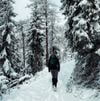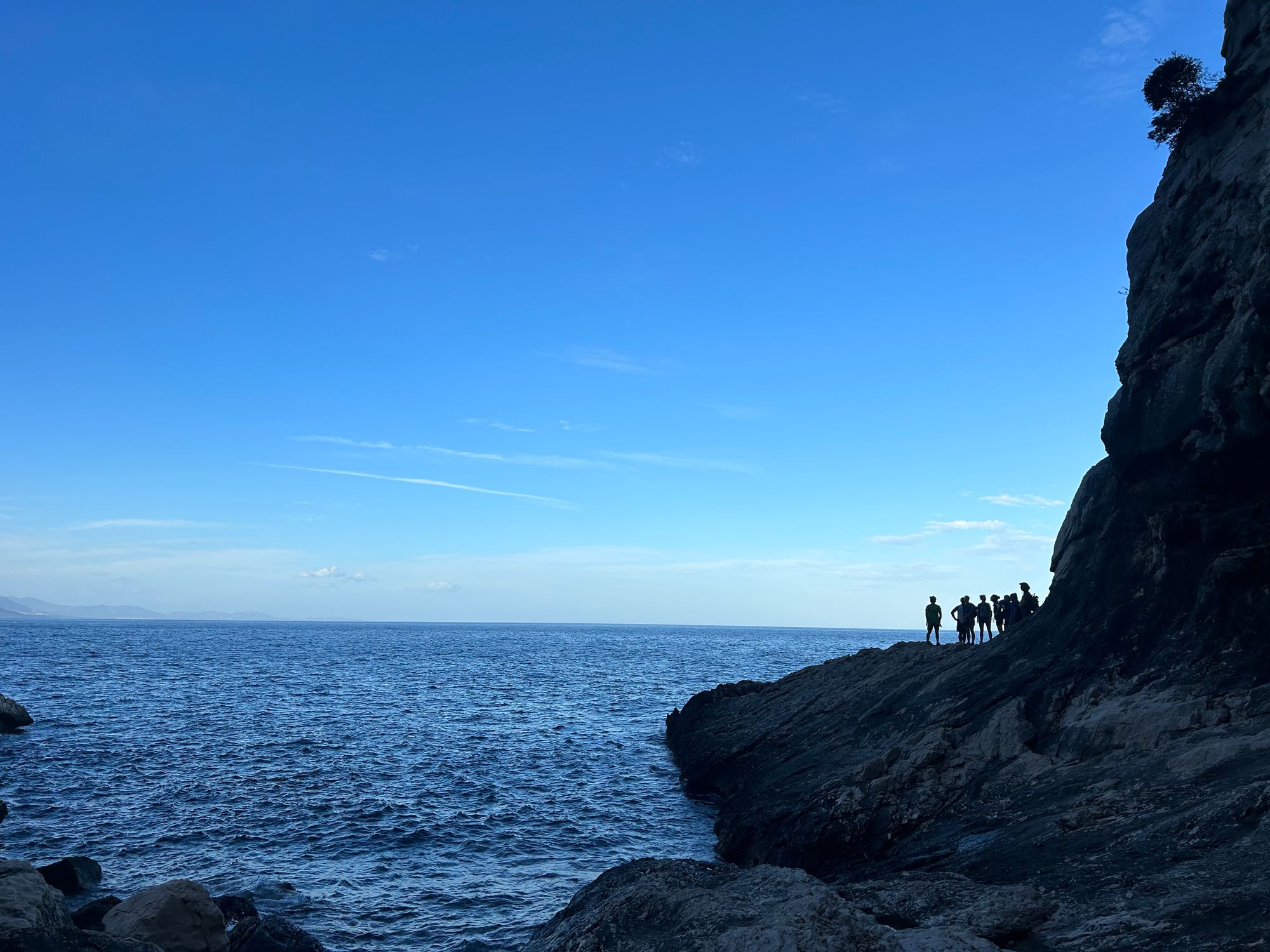Having arrived in Sardinia the previous day, we arose on the Golgo plateau where we'd spent our first night, grateful for the comfort of the secluded mountain hut to prepare us for the challenge that lay ahead.
As we set off in Land Rovers, we took in our first glimpses of the beautiful, rugged mountains of Sardinia’s eastern coast. Soon we had made it to the start point of the Selvaggio Blu ('Wild Blue') – one of Italy's most challenging trails, which involves climbing, scrambling and abseiling across vertical sea cliffs.
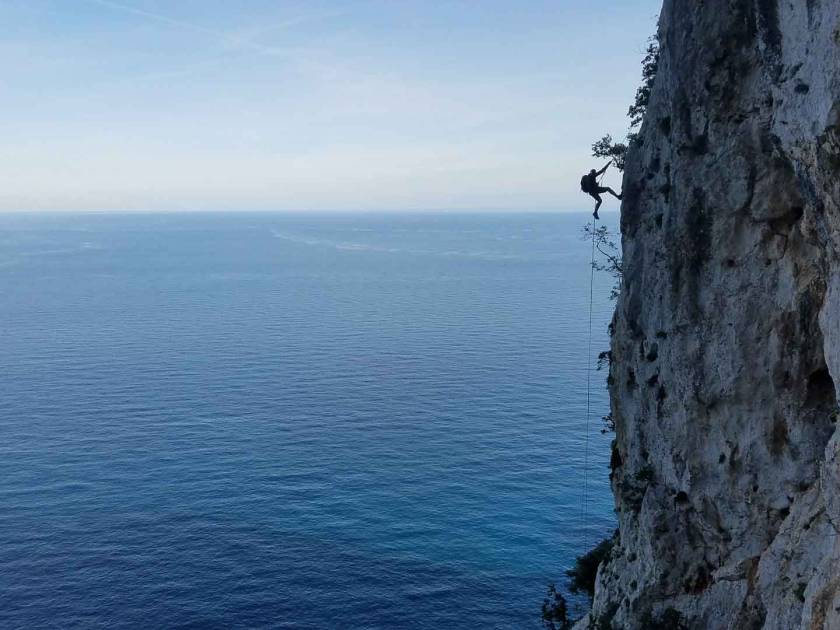
We gathered around our guide as he shared the history of the mountains, from the early shepherds who lived and worked alone in the wilderness, to the criminal gangs who had taken over the many caves as hideouts and lairs. He went on to explain the conception of the route by a pair of intrepid Alpinists in the 1980s, and how we would retrace their steps in the coming days.
We spent the day in awe of the rugged and severe landscape, as we shimmied across juniper bridges and tried not to lose our footing (or our nerve).
The contrast of the hostile rock faces jutting out against the turquoise sea simultaneously inspired wonder and apprehension for our journey ahead. It’s impossible not to be drawn into the beauty of this inhospitable coastline.
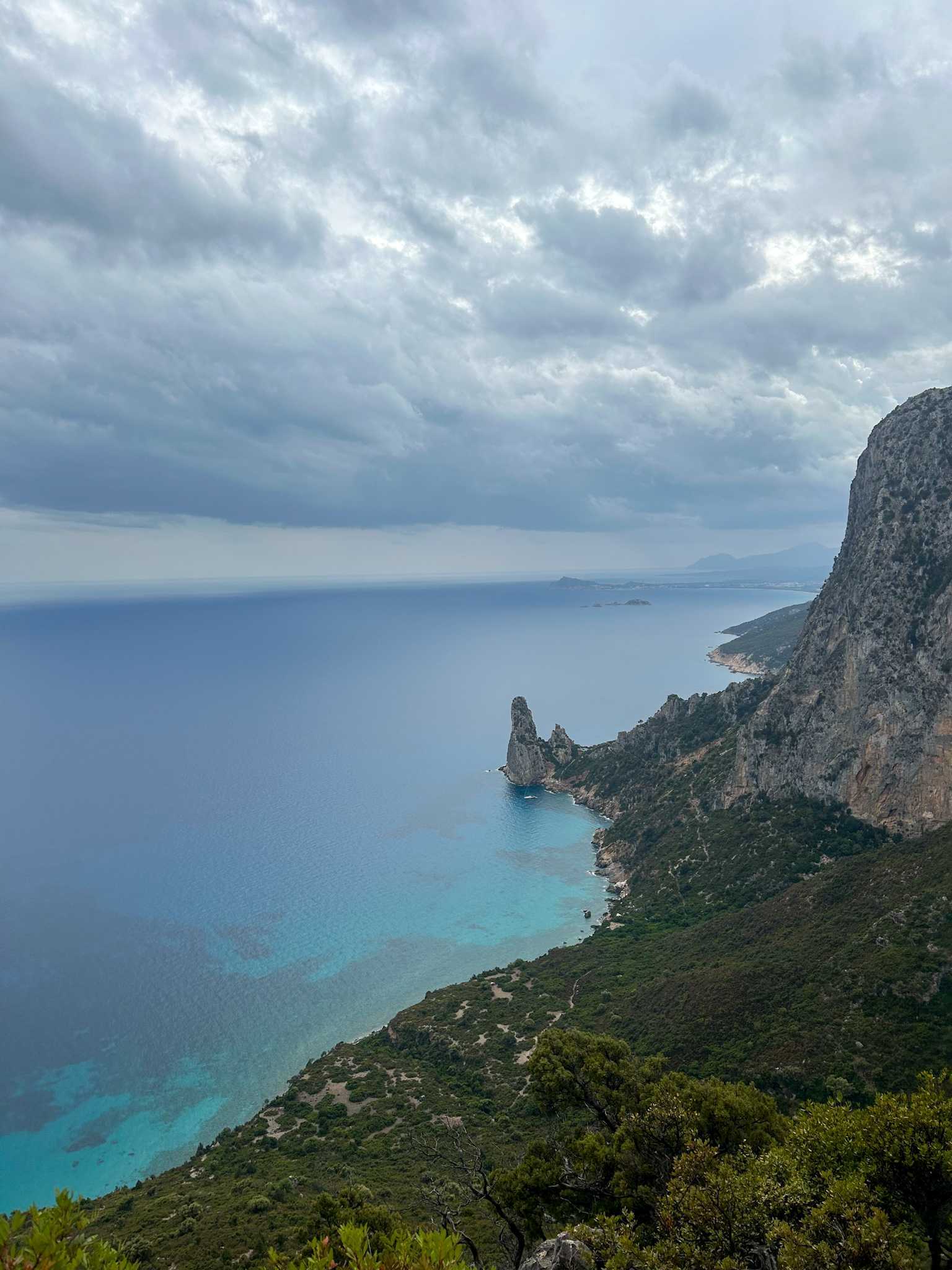
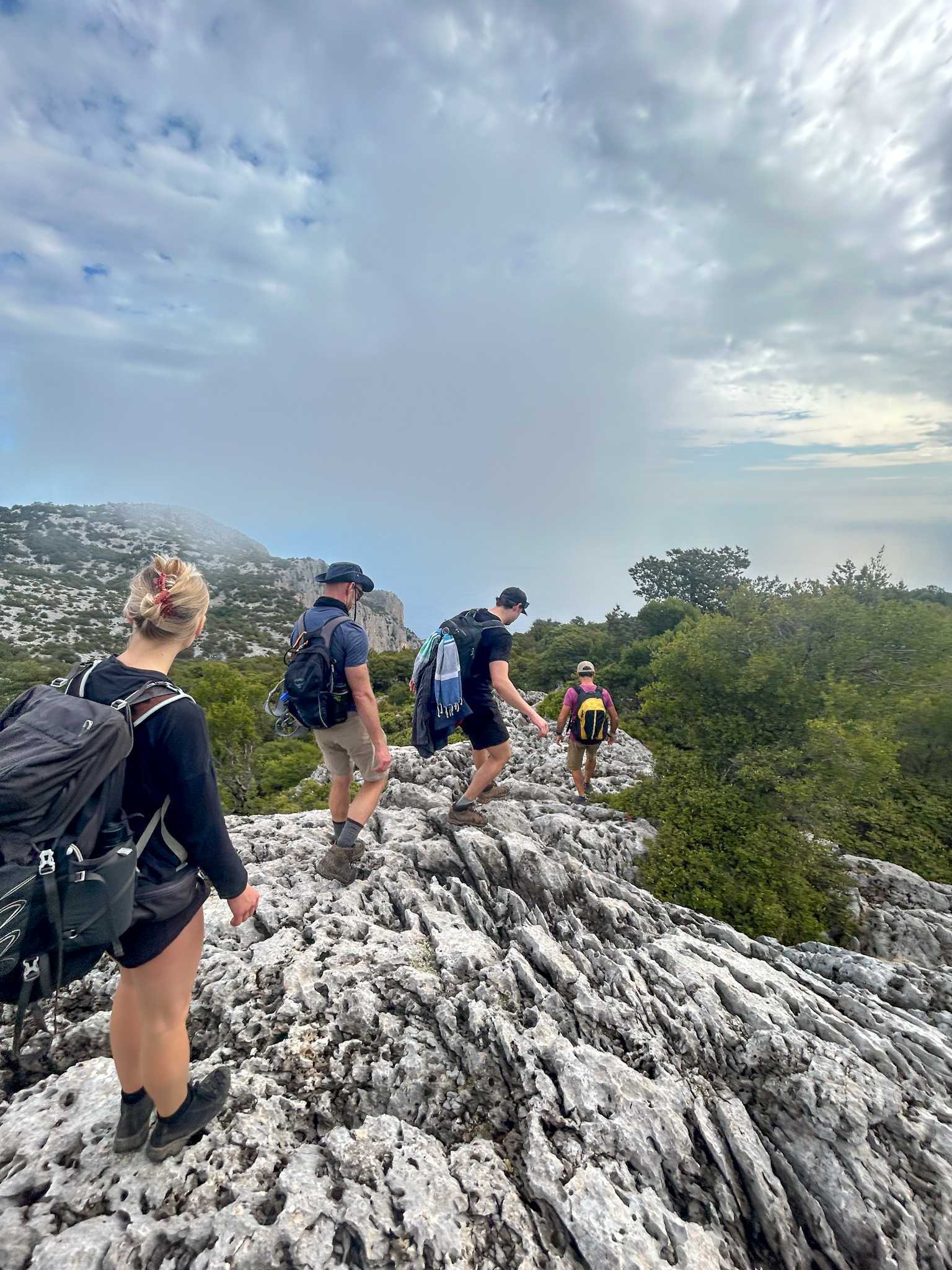
The dramatic rocks of Sardinia's coast. Photos: Poppy Brooks
On the trail, we were greeted with a melody of bells approaching us. Turning the corner, we came face to face with a herd of goats heading in the opposite direction – we truly were in shepherd territory now.
Our first night of camping was a rainy one, a real test for those in the group who’d not camped before. As we lay under the shelter of our tents, warmed by the Sardinian feast we'd recently enjoyed and far from the distractions of the modern world, we were engulfed by the contentment of simplicity.
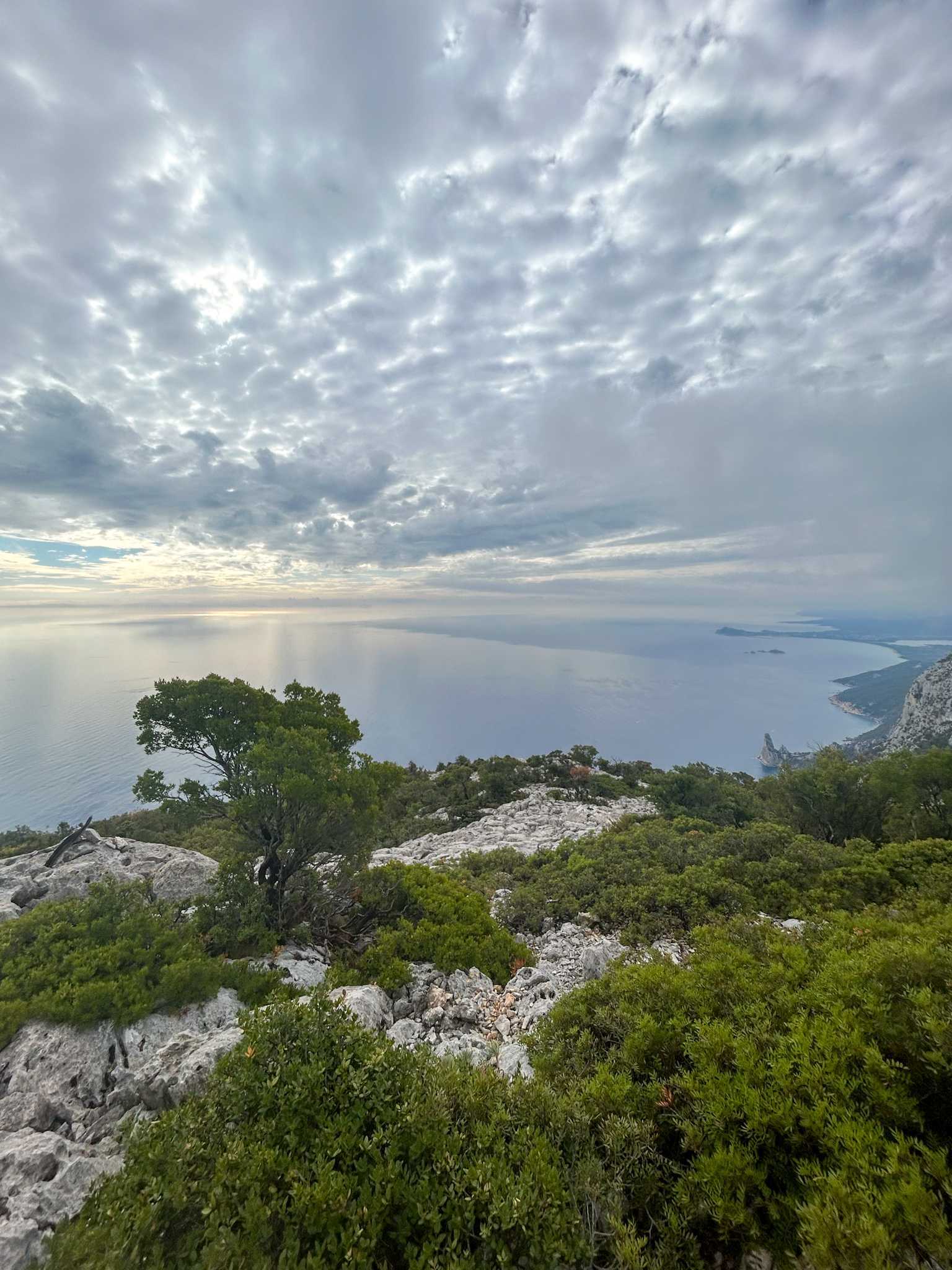
Dramatic skies greeted us on the second day of the trek. The rain, however, had left just in time for us to start tackling increasingly exposed cliffs. We spent the day in awe of the rugged and severe landscape, as we shimmied across juniper bridges and tried not to lose our footing (or our nerve). The sun made scattered attempts to greet us as we trekked, piercing through the dappled sky and casting beautiful shadows on the endless ocean.
As we arrived at the limestone fjord of Portu Pedrosu, our home for the night, we wasted no time dropping our bags and diving into the warm waters.
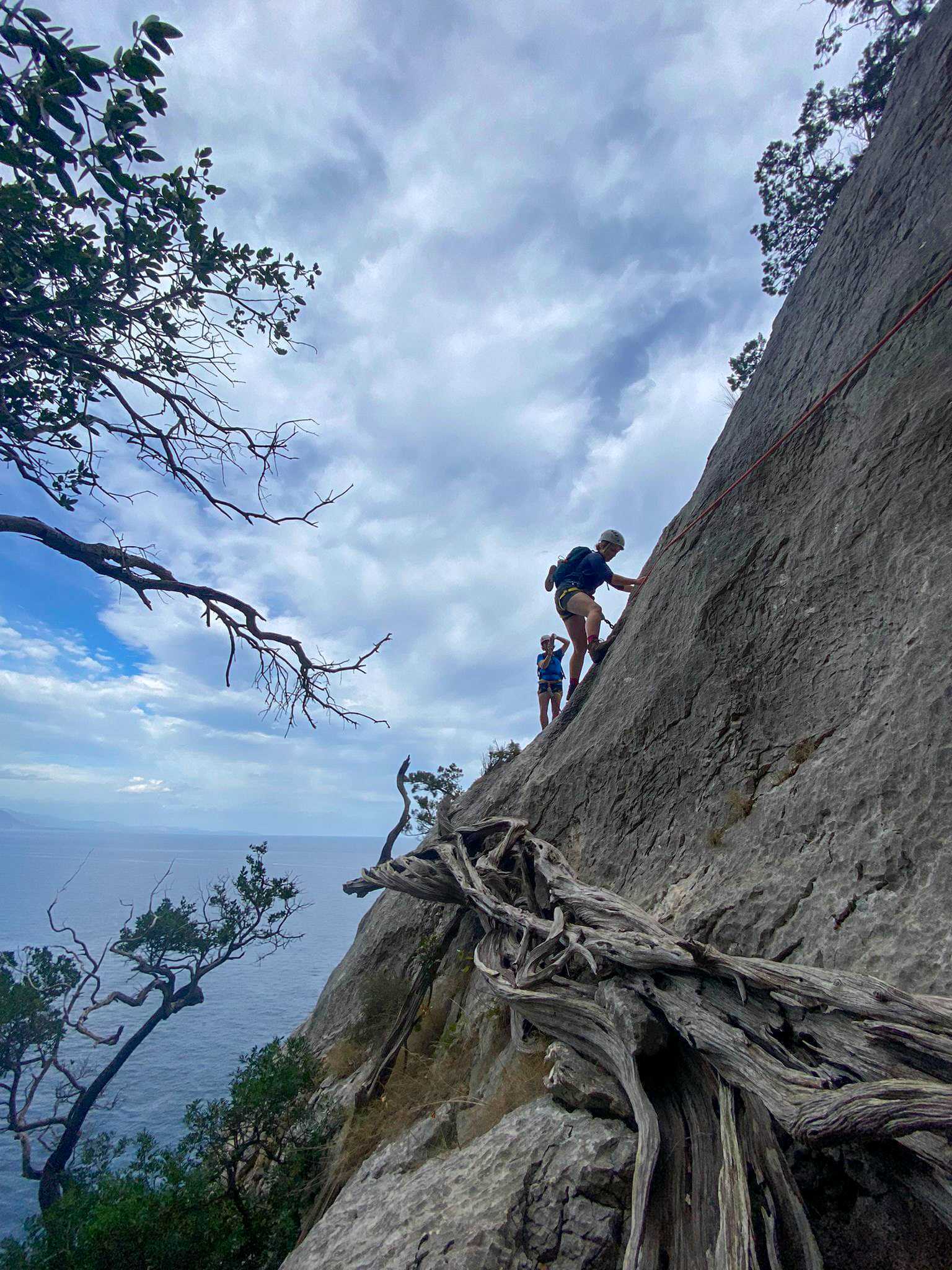
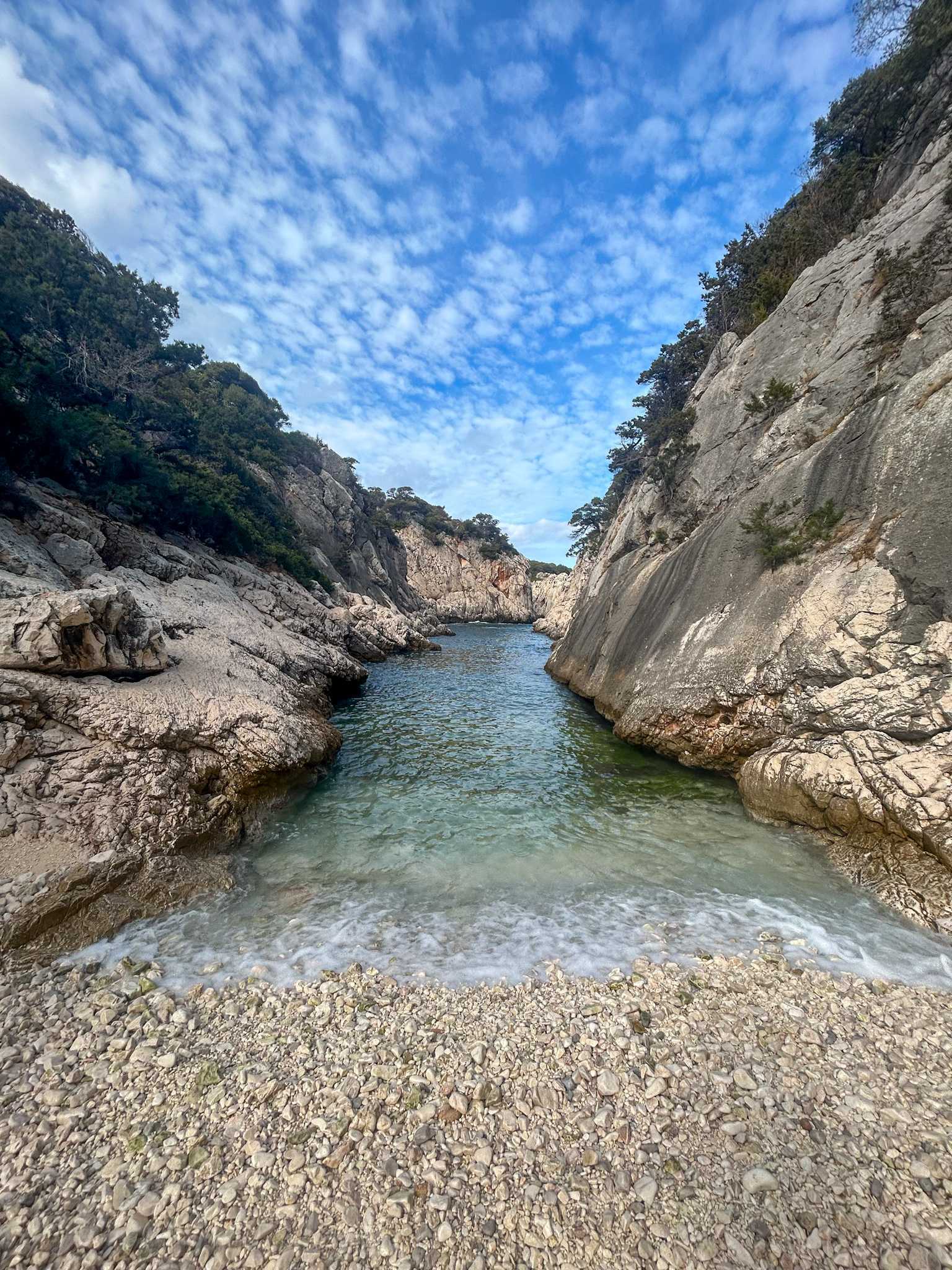
Shimmying along the coastal cliffs; the cove at Portu Pedrosu. Photos: Dominika Dudziuk (L), Poppy Brooks (R)
With 1200m of ascent to tackle on day three, we braced ourselves and hoped the mountains would be on our side. After a steady morning trek, we stopped for lunch aloft the most spectacular viewpoint – with views stretching over the Orosei Gulf. We ate quietly, each of us taking in the unexplainable beauty surrounding us.
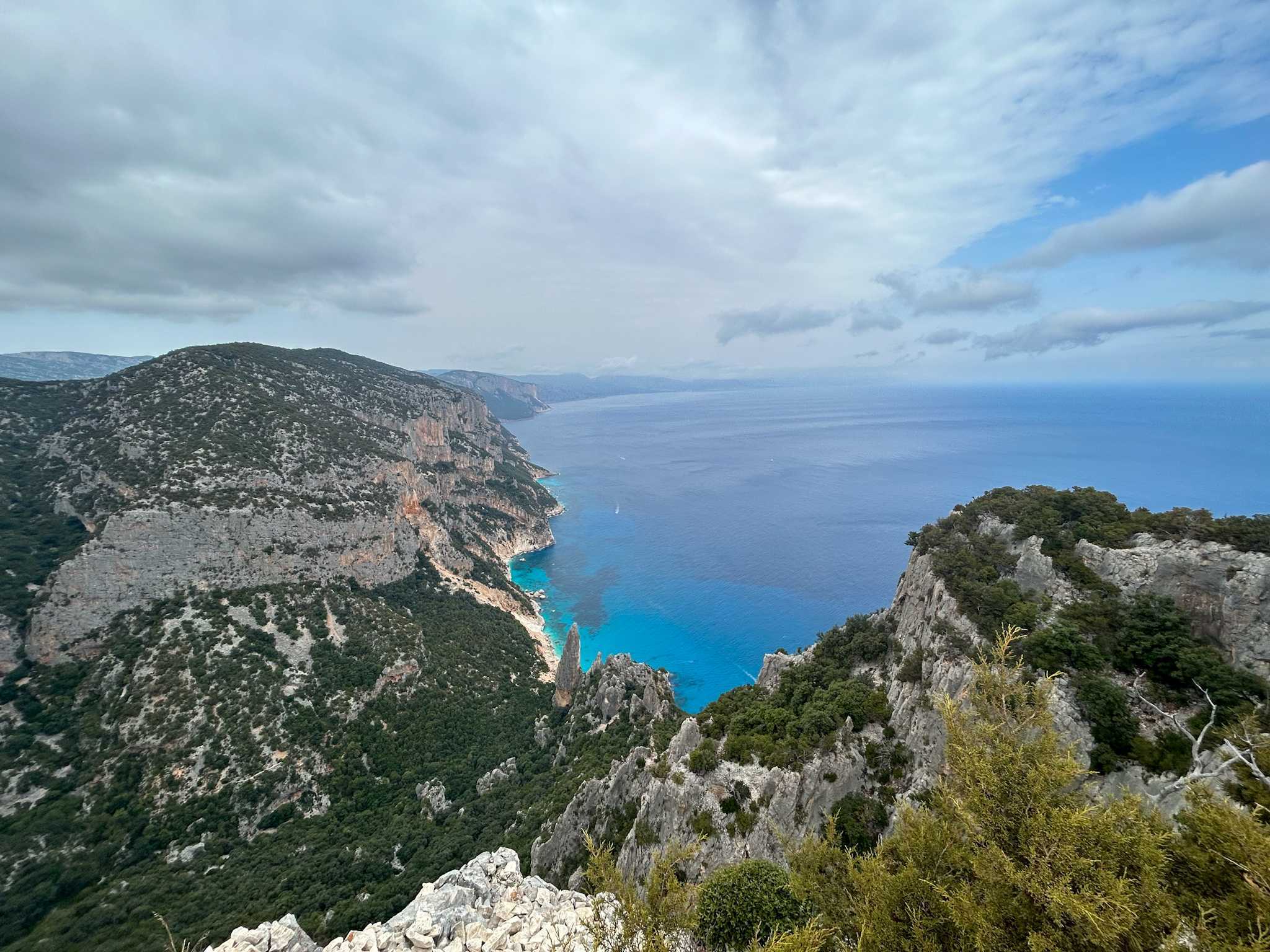
The group continued to be completely astounded by our guide's ability to lead us through scrub and along cliffs, finding routes in places we could see none. Meeting our first section of via ferrata, we realised the challenge was only just starting – as we stopped to put the harnesses on, there was definitely an air of anticipation among the group.
The via ferratas were awesome. This first section wasn’t too bad, but they ramped up in difficulty. Balancing precariously along the cliff edge among the tops of trees in the forest, we were certainly grateful for the safety of the harness. Some of the edges we were walking along seemed impossibly narrow, yet somehow our feet stayed on them.
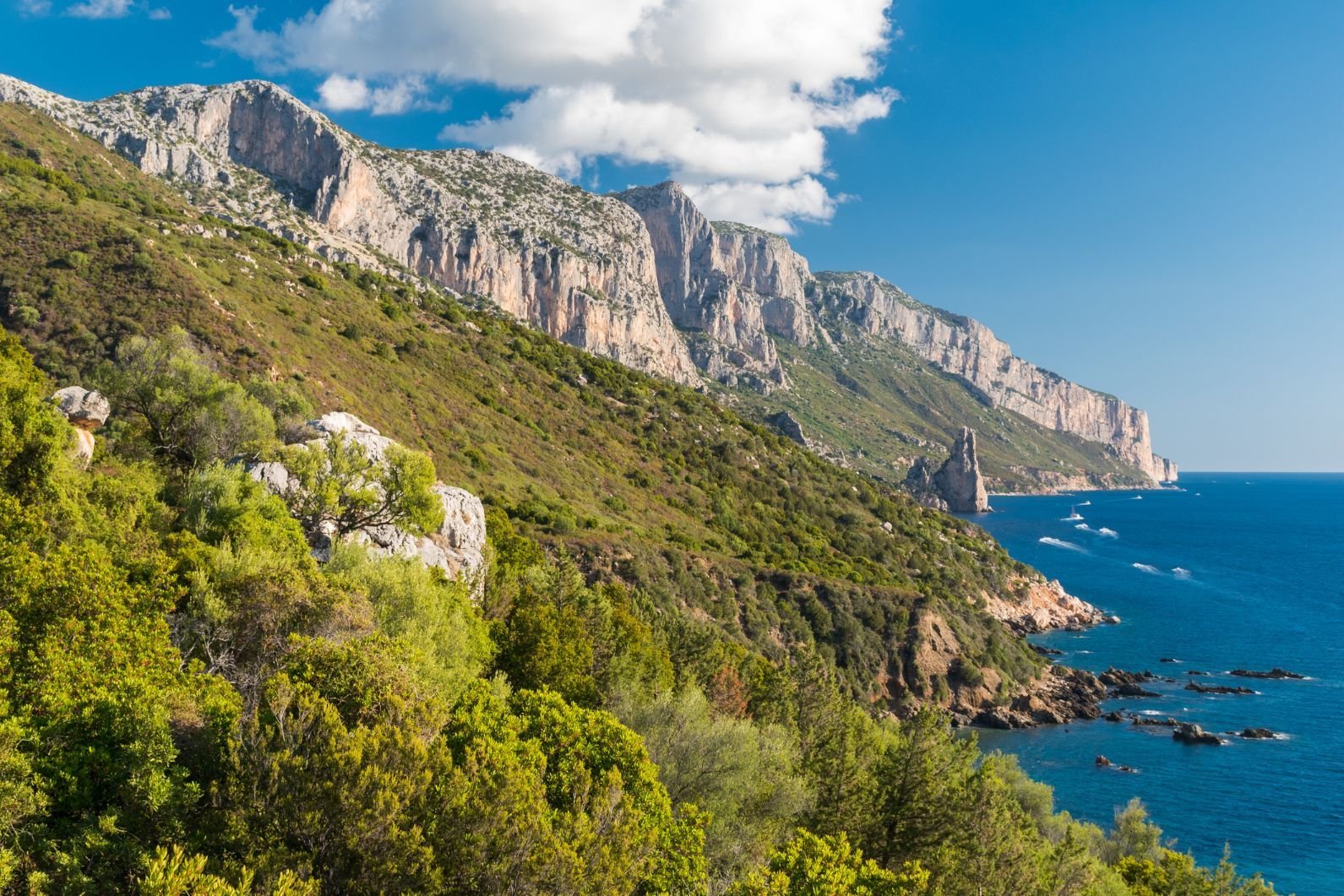
Arriving to camp at dusk, we each wandered into the forest for the now familiar ‘shower’ experience – pouring a bottle of warm water over yourself in an attempt to wash off the day’s exertion.
Staring up at the rope from which I was dangling, I contemplated what drives humans to seek adventure.
We packed our helmets for day four, in anticipation of our first abseils. Lining up for our first roped descent, our guide scanned the group for a volunteer to go first. As we mustered the courage, we were reminded of the shepherds who have tackled these same routes without the assurance of modern equipment. Staring up at the rope from which I was dangling, I contemplated what drives humans to seek adventure. It seems to me it is one of the great unifying characteristics of generations.
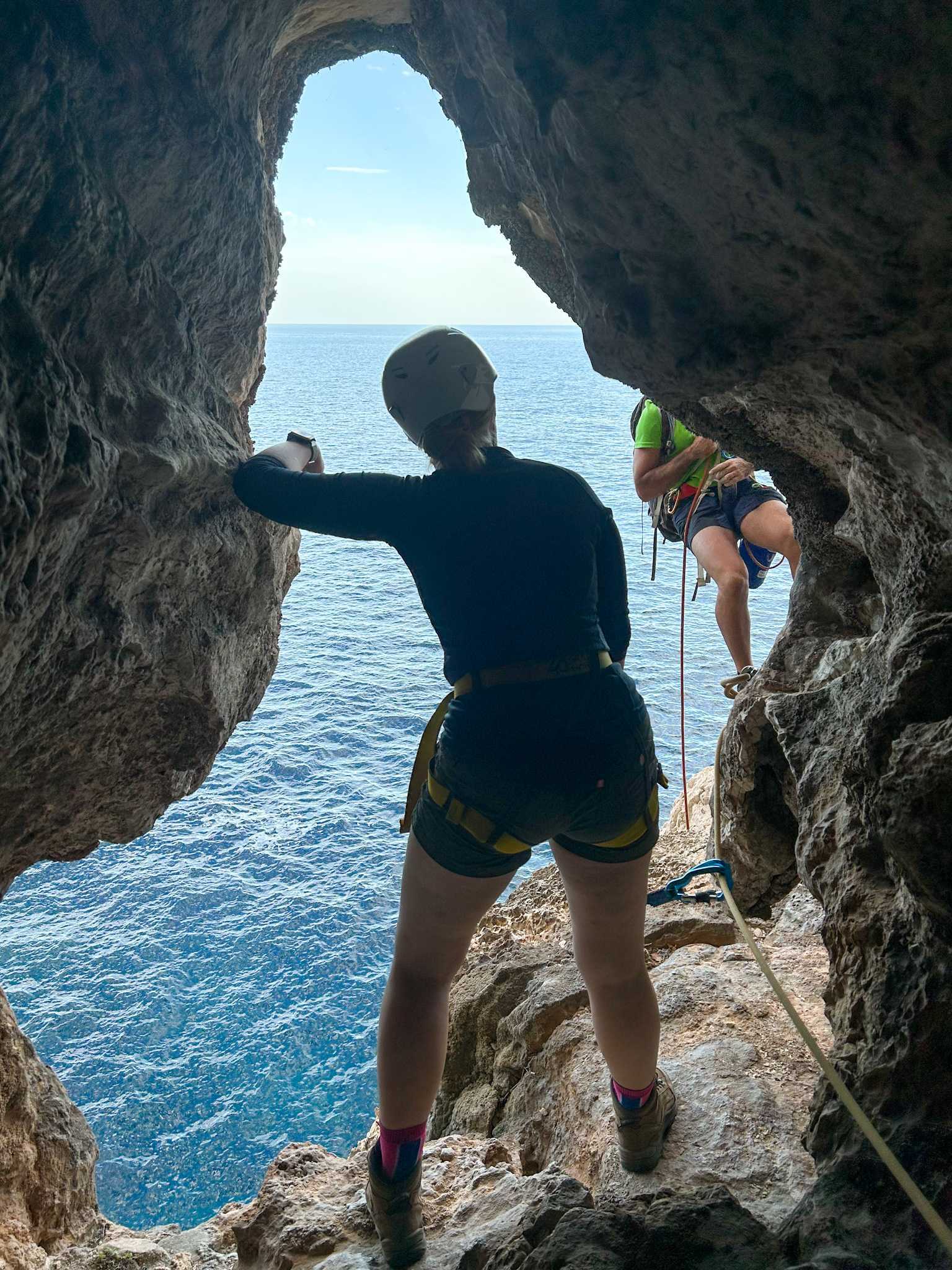
Stepping backwards off a cliff, the sea crashing against the rock 50m below, I began the descent. I was attempting to locate a passage, approximately 30m down the cliff face. As the opening came into view, I side-stepped across the rock face to ensure I made the landing. Safely attached inside the cave, I greeted my fellow adventurers as they made their way down one after another. Our impossible journey continued through the cave, and back into the inhospitable forest.

Our alarms on our final morning in the wild were redundant, as we were woken abruptly by pigs joining the camp. Our guide had warned us that this was a favourite spot for them, so we'd made extra effort the night before to make sure no food was left out.
Stepping backwards off a cliff, the sea crashing against the rock 50m below, I began the descent.
Still, at about 5am with the first glimpses of morning light coming through, we heard rustling... an attempt to shoo them away from the waste food box sent them scattering off in all directions. A few of us were sleeping with only the inner section of the tent as it was very mild at night, so awoke to pigs pressing their snouts against the fly net.
Packing away camp for the last time was strangely melancholy, as we’d all grown rather accustomed to our simple way of living, surrounded by the endless wilderness of the remote Baunei region.
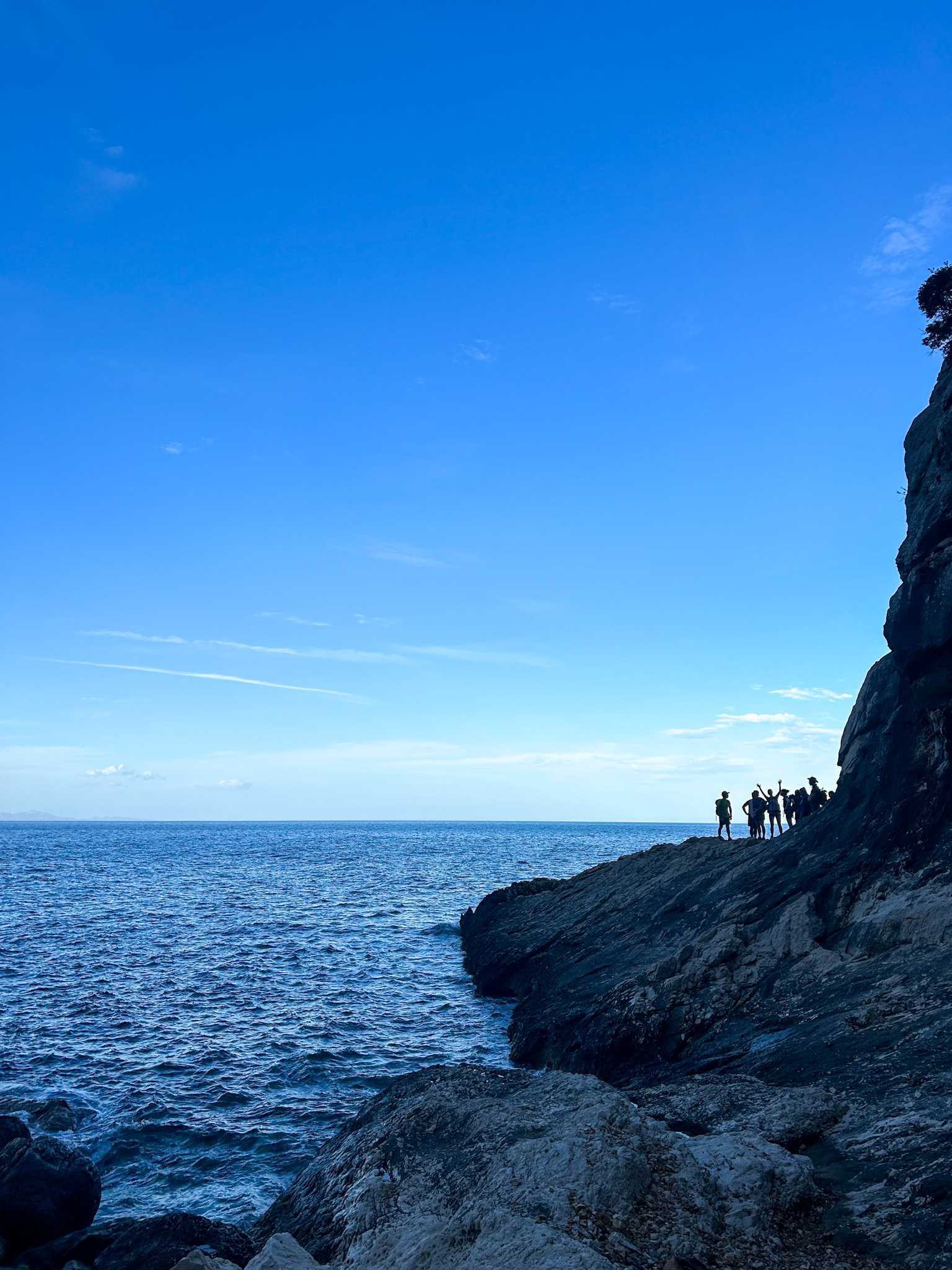
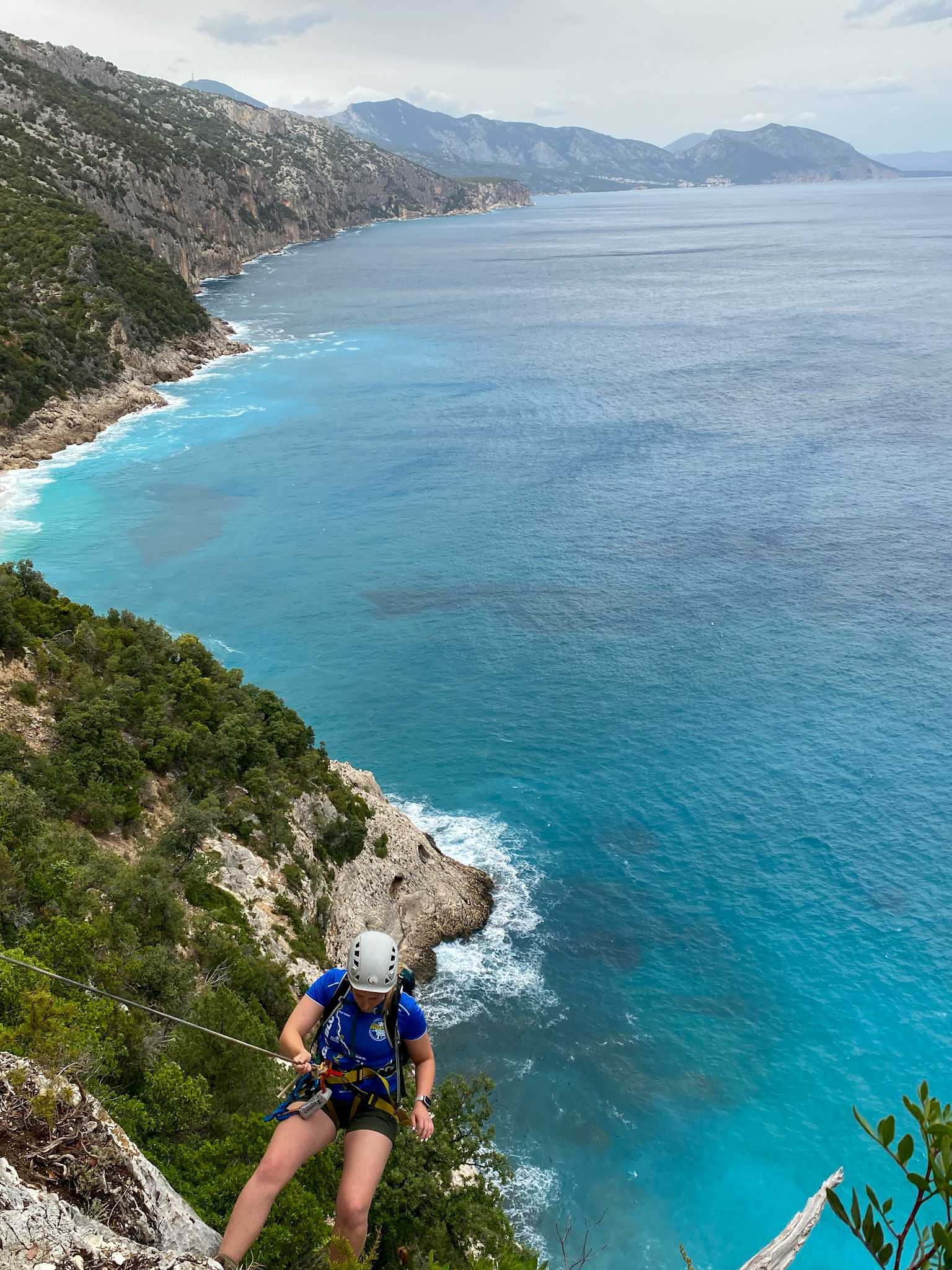
Shades of blue on the Selvaggio Blu. Photos: Poppy Brooks (L), Dominika Dudziuk (R)
Our last set of hurdles included a 45m abseil, and by far the most difficult climbs of the trip, but by the final day of the trail we felt ready for the challenge. At this stage we were all familiar with the kit and quickly performed the well-rehearsed routine of getting harnesses and helmets on.
As we lined up along the edge of the biggest abseil, the height started to become very apparent. Despite having done several by this stage, there was a definite moment where I questioned the sanity of choosing to walk off a cliff attached only to a rope. Yet once I'd taken the step over the edge and begun the descent, it was an incredible feeling that was over all too quickly.
It struck us how few people will get to experience this beautiful and unforgiving side of Sardinia.
The final section of climb was tough: an incredibly exposed section, with a few meters of vertical climb. Our guide suggested that those who were less confident go to the front (and in an awesome 'girl power' moment, all the men moved silently forward leaving the women to bring up the rear). The team pulled together, with all of us doing our best to take in the immense scenery as we clung to rock and trees.
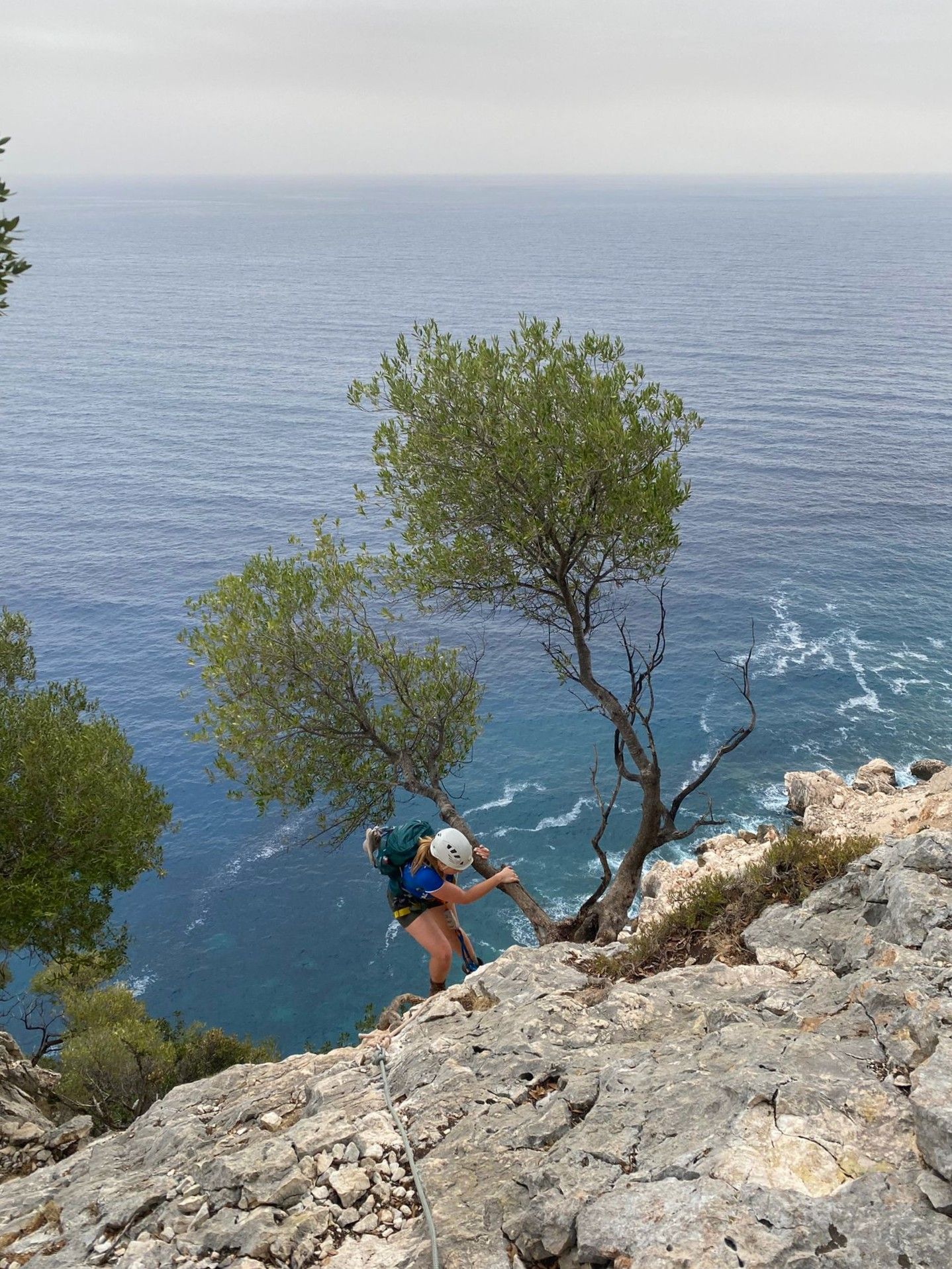
We always had the rope to rely on, but at this stage most of us were determined to get up using only the rock. Teetering 50 metres or so above the ocean, desperately feeling around for handholds in the rock whilst fighting the temptation to just grab the rope, was invigorating. There was a real buzz among our group at the top, with many remarking how they couldn't have seen themselves achieving that at the start of the trip.
As we waited for our final abseil, it struck us how few people will get to experience this beautiful and unforgiving side of Sardinia. This spectacularly wild route encompasses all the mystery and challenge the Mediterranean has to offer.
Inspired? Take on the challenging Selvaggio Blu route yourself.

